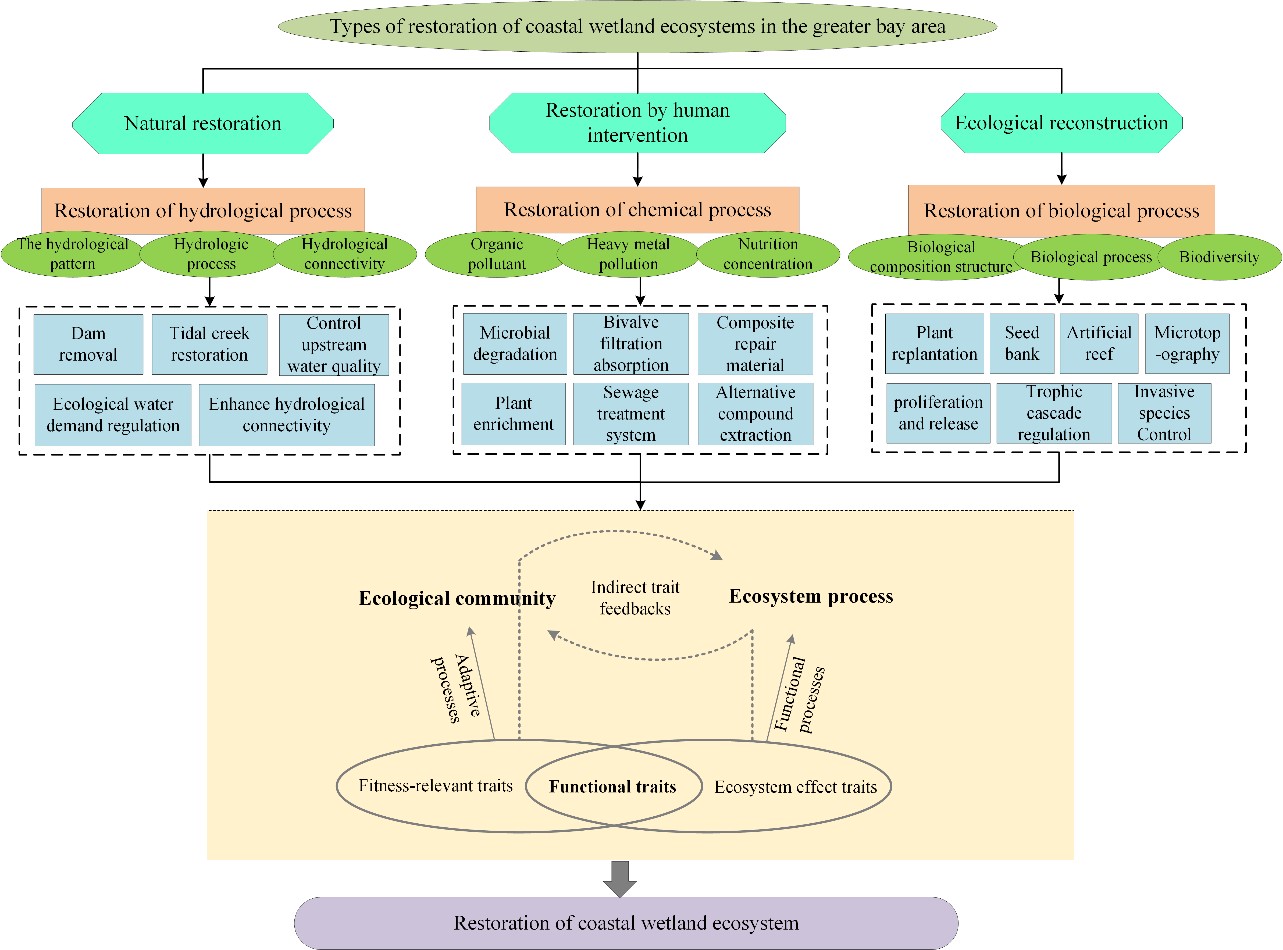Research progress and development trend of restoration of damaged coastal wetland ecosystems in greater bay areas
Published 13 June, 2025
In a new study published in Watershed Ecology and the Environment, a team of researchers from China discussed the research progress and development trends of coastal wetland restoration in GreaterBay Areas.
The researchers highlighted the dual influence of human activities and climate change on the coastal wetlands in these areas, which have suffered damages such as reduced area, habitat degradation, and impaired ecological functions. “We reviewed the mechanisms and types of coastal wetland ecosystem restoration, and the restoration technologies mainly focus on biological, hydrological, and chemical processes,” shares lead author Shuling Yu. “Hydrological restoration involves measures like restoring tidal exchange and hydrological connectivity, while chemical restoration focuses on addressing organic pollution and heavy metal contamination through methods such as microbial remediation and phytoremediation. Biological restoration emphasizes replanting native species, controlling invasive species, and enhancing biological connectivity via microtopography restoration and artificial reefs.”
The study emphasized the application of functional process maintenance principles in coastal wetland restoration, and systematically expounds the relationship between functional processes and ecosystem functions. “We classified the restoration types of coastal wetlands in Greater Bay Areas into natural restoration, human intervention restoration, and ecological reconstruction, and elaborated on the applicable scenarios and specific methods of each type,” adds Yu.
Further, the researchers clarified the current research progress and existing deficiencies, and proposed future research trends. These include diagnosing impaired functional processes, enhancing biological functional processes, simulating the functional processes of biogenic elements, restoring hydrological functional processes, and constructing a multi-objective, multi-scenario, and multi-scale network comprehensive regulation model. “Through this study, we hope to develop a more systematic and effective restoration strategy by integrating different processes and scales,” says Yu.


Contact author: Bao-shan CUI, State Key Laboratory of Water Environment Simulation, School of Environment, Beijing Normal University, Beijing, China, cuibs@bnu.edu.cn
Funder: This research was supported by the Key Project of National Natural Science Foundation (U1901212), Project supported by the Fund for Innovative Research Group of the National Natural Science Foundation of China (Grant No. 51721093), and National Key R&D Program of China (2017YFC0404505).
Conflict of interest: The authors declare that they have no known competing financial interests or personal relationships that could have appeared to influence the work reported in this paper.
See the article: YU S, CUI B, XIE T, et al. Research progress and development trend of restoration of damaged coastal wetland ecosystems in greater bay areas. Watershed Ecology and the Environment, 2022[2022-11-17]. https://www.sciencedirect.com/science/article/pii/S2589471422000158